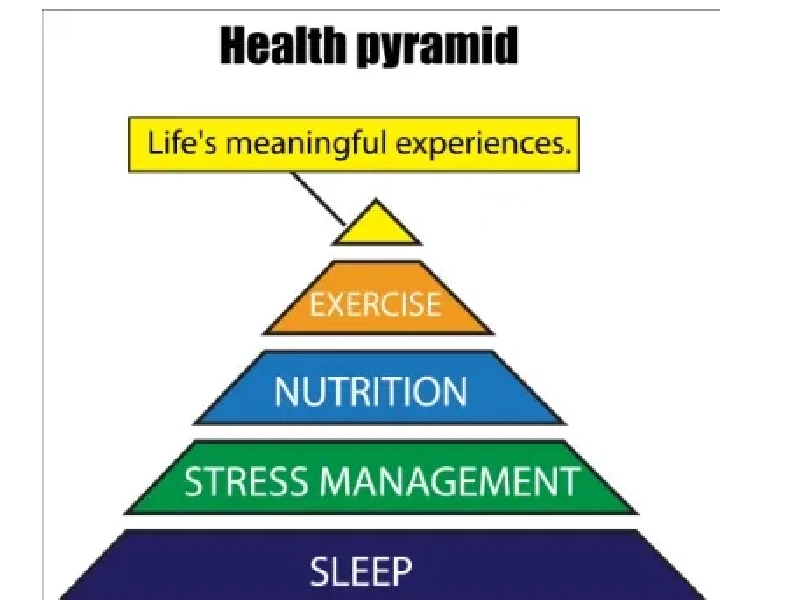
Introduction: The Paradox of Modern Health
In today’s world, we often hear that health is wealth. But what does true health mean? Is it just about having a fit body, a sharp mind, or a wide social circle? The answer is more profound and interconnected than we might think.
Imagine a triangle, each side representing a crucial aspect of health: physical, mental, and social. This model, known as the Health Triangle, offers a holistic approach to well-being, emphasizing that neglecting one side can destabilize the entire structure.
In this comprehensive guide, we’ll delve deep into the Health Triangle, exploring its origins, significance, and practical applications. Through expert insights, real-life case studies, and actionable tips, we’ll uncover how balancing these three components can lead to a healthier, more fulfilling life.
What Is the Health Triangle?
The Health Triangle is a model that illustrates the interconnectedness of three essential components of health:
-
Physical Health: The condition of your body, encompassing fitness, nutrition, and the absence of illness.
-
Mental Health: Your emotional and psychological well-being, including stress management, self-esteem, and resilience.
-
Social Health: The quality of your relationships and interactions with others, highlighting communication, empathy, and support networks.
Each side of the triangle is equally important, and an imbalance in one area can affect the others. For instance, chronic stress (mental health) can lead to physical ailments and strain social relationships.
The Origins and Evolution of the Health Triangle
A Classroom Concept Turned Global Framework
The Health Triangle concept was introduced as a classroom project in Alaska in 1997. Its simplicity and effectiveness caught the attention of educators and health professionals, leading to its adoption by the World Health Organization (WHO). WHO defines health as “a state of complete physical, mental, and social well-being and not merely the absence of disease or infirmity.”
Over the years, the model has been embraced in various educational curricula and wellness programs worldwide, serving as a foundational tool for promoting holistic health.
The Interconnectedness of the Triangle
How One Side Affects the Others
The three components of the Health Triangle are deeply interconnected:
-
Physical Health and Mental Health: Regular exercise can reduce symptoms of depression and anxiety. Conversely, mental health issues can manifest as physical symptoms like fatigue or headaches.
-
Mental Health and Social Health: Positive social interactions can enhance mood and reduce stress. On the other hand, social isolation can lead to feelings of loneliness and depression.
-
Social Health and Physical Health: Strong social support can encourage healthy behaviors, such as regular exercise and balanced nutrition.
Understanding these interconnections emphasizes the importance of nurturing all three aspects to maintain overall well-being.
Real-Life Case Studies: The Impact of Imbalance
Case Study 1: The Overachiever
Jake is a high school student excelling academically and athletically. However, he spends most of his time studying and training, neglecting his social life. Over time, Jake experiences burnout, anxiety, and a decline in physical health due to a lack of rest and social interaction.
Case Study 2: The Social Butterfly
Cassie is highly active in social events and has a wide circle of friends. Yet, she often skips meals and neglects exercise to keep up with her social commitments. This imbalance leads to weight gain and decreased energy levels, affecting both her physical and mental health.
These case studies highlight the importance of balance. Focusing too much on one area while neglecting others can lead to health issues.
Practical Tips to Balance the Health Triangle
1. Physical Health
-
Exercise Regularly: Aim for at least 30 minutes of moderate activity most days of the week.
-
Eat a Balanced Diet: Incorporate a variety of fruits, vegetables, lean proteins, and whole grains.
-
Prioritize Sleep: Ensure 7-9 hours of quality sleep each night.
2. Mental Health
-
Practice Mindfulness: Engage in activities like meditation or deep breathing exercises.
-
Manage Stress: Identify stressors and develop coping strategies, such as journaling or talking to a therapist.
-
Seek Professional Help: Don’t hesitate to consult a mental health professional when needed.
3. Social Health
-
Cultivate Relationships: Spend quality time with family and friends.
-
Communicate Effectively: Practice active listening and express yourself openly.
-
Join Community Activities: Participate in group hobbies or volunteer work to build connections.
Statistics: The Importance of a Balanced Health Triangle
-
Physical Activity and Mental Health: According to the National Institute of Mental Health, regular physical activity can help reduce anxiety and depression.
-
Social Support and Longevity: A study published in the American Journal of Epidemiology found that individuals with strong social relationships have a 50% increased likelihood of survival compared to those with weaker social ties.
These statistics underscore the significance of maintaining balance across all three components of the Health Triangle.
The Future of the Health Triangle
As we advance into an era of personalized medicine and digital health tools, the Health Triangle remains relevant. Future developments may include:
-
Wearable Technology: Devices that monitor physical activity, sleep patterns, and stress levels.
-
Telehealth Services: Virtual consultations for mental health support and social well-being.
-
AI-Powered Health Apps: Applications that provide personalized recommendations for balancing physical, mental, and social health.
Embracing these innovations can further enhance our ability to maintain a balanced and healthy lifestyle.
Key Takeaways
-
The Health Triangle emphasizes the interconnectedness of physical, mental, and social health.
-
An imbalance in one area can adversely affect the others.
-
Practical steps, such as regular exercise, stress management, and fostering relationships, can help maintain balance.
-
Future advancements in technology may offer new tools to support holistic well-being.
Frequently Asked Questions
-
What happens if one side of the Health Triangle is neglected?
Neglecting one aspect can lead to imbalances, affecting overall health. For example, poor mental health can lead to physical ailments and strained social relationships. -
How can I assess my own Health Triangle?
Reflect on each component: Are you physically active? Do you manage stress effectively? Do you have supportive relationships? Identifying areas of improvement can guide you toward balance. -
Can the Health Triangle be applied to children and adolescents?
Absolutely. Teaching children about the importance of balancing physical activity, emotional well-being, and social interactions can set the foundation for lifelong health. -
Are there cultural considerations in applying the Health Triangle?
Yes, cultural values and practices can influence how individuals perceive and prioritize the components of the Health Triangle. It’s essential to approach each aspect with cultural sensitivity. -
How often should I reassess my Health Triangle?
Regular self-reflection, such as monthly or quarterly, can help you stay aligned with your health goals and make necessary adjustments.
Summary Table: The Health Triangle at a Glance
| Component | Key Focus Areas | Practical Tips |
|---|---|---|
| Physical Health | Exercise, Nutrition, Sleep | Regular activity, balanced diet, adequate rest |
| Mental Health | Stress Management, Self-Esteem | Mindfulness, therapy, and emotional regulation |
| Social Health | Relationships, Communication | Quality time, active listening, community involvement |
Conclusion: Embracing the Health Triangle for a Fulfilling Life
The Health Triangle offers a comprehensive framework for understanding and achieving holistic well-being. By recognizing the interdependence of physical, mental, and social health, we can make informed choices that promote balance and fulfillment.
Remember, true health is not merely the absence of illness but the presence of harmony across all aspects of life. Embrace the Health Triangle, and embark on a journey toward a healthier, more balanced you.


